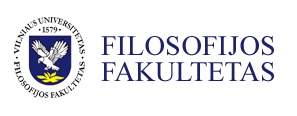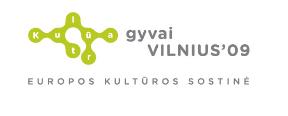Europe/4 points
The French National Geographic Institute has estimated the geographical centre of Europe to be in Lithuania, just 26 km north of Vilnius. So, in 2009 Europe’s capital is coming back to its geographical heart. However, the status of Vilnius as that of the geographical centre of Europe clashes with the understanding of many Western dwellers that not only Vilnius and Lithuania but the whole of Eastern Europe as well belongs to the cultural periphery of Europe. The geographical and the psycho-physical maps of Europe are two different things.
The purpose of the project Europe/4 points is to readdress the most pressing questions of “What is Europe?”, “What is the centre and the periphery of Europe?”, “Do the concepts of centre and periphery still have any meaning in the age of global culture?”, “How does one define the European identity?”.
The project Europe/4 points adopts two points of reference to look at Europe – those are the geographical Europe and the artistic Europe. Both of the perspectives are seen as overlapping, i.e. the geographical map of Europe is viewed through a prism of art. Since the meaning of any continent quite often reveals itself in the continent’s periphery, the project Europe/4 points underlines the four points that define the map of Europe – the north-most in Norway (Nordkapp (71°08′ 02.835″ N), the south-most in Spain (Punta de Tarifa (36° 00′ 00.175″ N), the east-most in Russia (the Komi Autonomous Republic (66°11′ 57.225″ E), and the west-most in Portugal (Cabo da Roca (09°30′ 02.727″ W). These four points are like the frame of the European map. Seen from the conceptual artistic viewpoint, the goal of the project is to fill the map of Europe that is being drawn from the European periphery with artistic actions and signs.
The project has the involvement of a team of seven artists and theoreticians from Lithuania. It was initiated by founders of the Taškas gallery Mindaugas Šnipas and Ramūnas Alminas with the assistance of Gediminas Akstinas, Jurga Barilaitė, Nerijus Milerius, Jurgita Remeikytė and Eglė Ridikaitė. Said four points are the staging grounds for artistic actions, and the discussion provoked by such actions persists on the web. The internet is perceived as an artistic territory that is independent and free from any geographical restrictions, a place where artists and theoreticians from different countries can meet and talk about European art and culture. The results of the artistic actions and online discussions are presented in public projections in Vilnius and at the final exhibition that is to take place at the close of the project.
The artistic project Europe/4 points is a part of the cultural recognition programme of Vilnius – European Capital of Culture 2009.
Projection One
The first projection of photographs of the Europe/4 points cycle was put on display in the 2nd floor windows of gallery Akademija (Pilies St. 44/2) on March 9 – 11, 2009.
“Window projections are a visual way to present the public with the results that were or will be created under the project (in Spain and Portugal – in 2008; in Norway and the Komi AR – in summer 2009). The number of the projections, which in March stood at 34, is being enlarged through the addition of new shots to eventually reach 360 (as a reflection of 360°),” – said Mindaugas Šnipas, an author of this project.
In August 2008, the sculptors, photographers, video artists and theoreticians visited two of the four marginal points of Europe – the south-most in Spain, in the town of Tarifa, and the west-most, Cabo da Roca in Portugal. The process of travelling itself could be dubbed as spatial mapping using artistic tools. While travelling the land, it is customary to find your way around using maps, or sea maps when you’re at sea, and both land and sea travellers have been using stars and star maps to find the right direction since the days of yore. Since some of the previous projects by gallery Taškas took place at sea, the experience and specifics of sea travel were used to reach the south- and west-most points of Europe as well. The result – artistic actions and projections that were born as if by the overlapping of a land, a sea and a star map, by highlighting the new meanings that emerged at the touching points of those maps.
Projection two
The second projection of photographs from the Europe/4 points project was shown in the 2nd floor windows of gallery Akademija (Pilies St. 4/22) from 9 p.m. to midnight on April 16 – 18, 2009. Another 30 shots were added to the 34 that had been screened in March.
360 shots – it’s like a journey around the globe. The 34-shot projection of March saw the beginning of the charting of a symbolic map of this journey with its celestial vertical – the Moon. April’s projection of 30 shots was the natural continuation of making the map of the journey. Starting with the highest point of the celestial vertical, a line was drawn down towards the horizon, the mountains and the elements of the sea, to the bottom point of the vertical – the underwater world. This way an attempt was made to come up with a reference artistic map that would chart the elements – fire, air, water and earth – that escort the travellers.
Projection three
On June 4 – 6, 2009, the ground floor windows of gallery Akademija (Pilies St. 44/2) were used to screen the third projection of photographs from the Europe/4 pointscycle.
The projection of June was different from the first two both in terms of its theme, and the technology used. The first two projections charted a symbolic map of Europe that started with a celestial vertical – the Moon – and ended in the lowest point of that vertical – the undersea world. Shots of this symbolic map were displayed in three windows of the second floor of the Akademija gallery. In June, the projection migrated from the second floor down to the street level, to ground-floor windows where it was put on display in three digital photo frames. Getting closer to the street where there are always busy people rushing by also reflected the thematic contents of the June projection that was slightly different than before. Projection three featured travel journal-type sketches by painter Eglė Ridikaitė that were done and written during her journey to Spain and Portugal as well as postcards painted or inscribed upon returning to Lithuania.
“I wrote on the first postcard in Germany,” – said Eglė Ridikaitė, one of the people involved in the project. “I would send inscribed or painted postcards to Lithuania. Although we got back from the trip on the last day of August, postcards from Spain, France, Germany, and Poland kept coming in until as late as the middle of October. Postcards are like memories that come back to you after the journey in its physical sense is long over.”

